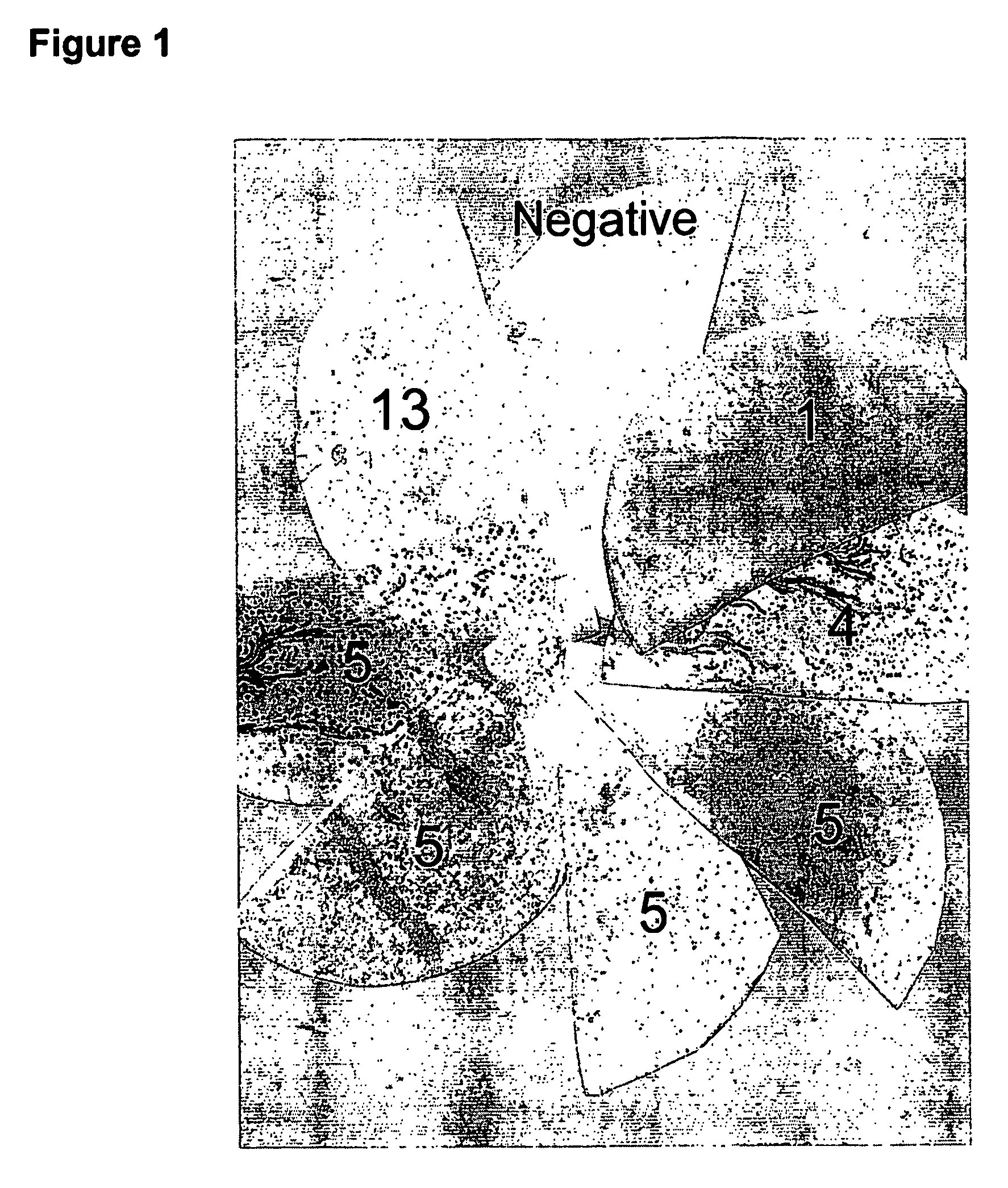Cancer immunotherapy
a technology for immunotherapy and cancer, applied in the field of cancer immunotherapy, can solve the problems of abnormal expression of genes, tumour formation, and erratic cell growth and proliferation, and achieve the effect of removing the effect of viral replication
- Summary
- Abstract
- Description
- Claims
- Application Information
AI Technical Summary
Benefits of technology
Problems solved by technology
Method used
Image
Examples
example 1
Humoral Responses to BMI-1
Method
[0064] The serological detection of antigens using a recombinant cDNA expression library derived from a hepatocellular carcinoma (HCC, purchased from Novagen and confirmed with our own ‘in house’ library) was performed using serum from HCC patients and normal healthy controls. The sera were preabsorbed against both E.coli lysate and a phage λ lysate and then used to probe filters carrying the cDNA library. Briefly, a culture of BL21 cells are grown overnight and resuspended in 10 mM MgSO4. 600 ul of these cells are incubated with 3 μl of the cDNA HCC library for 15 minutes and then mixed with NZY agarose and plated out onto NZY agar plates. These are incubated for 6-8 hours until plaques are visible and then overlaid with IPTG soaked Hybond-C filters. The plates are stored overnight at 4° C. and incubated at 37° C. for 4 hours the next day. The filters are removed from the plates, washed 3 times in TBS-T and then blocked for an hour in TBS-T 5% mil...
example 2
Prediction of HLA-A2 Epitopes in BMI-1 and ELISpot Studies
[0066] Epitopes were predicted from the BMI-1 protein sequence using the BIMAS (BioInformatics and Molecular Analysis Section) web site (Parker, KC et al 1994 Scheme for ranking potential HLA-A2 binding peptides based on independent binding of individual peptide side-chains. J Immunol 152:163). The peptides were selected according to scores compared to known epitopes from Epstein-Barr virus.
A0201 peptidesTLQDIVYKL(SEQ ID NO: 1)andCLPSPSTPV;(SEQ ID NO: 9)B2702 / 05 peptidesVRYLETSKY(SEQ ID NO: 2)andKRYLRCPAA;(SEQ ID NO: 3)B4402 / 03 peptidesYEEEPLKDY(SEQ ID NO: 10)andKEEVNDKRY.(SEQ ID NO: 11)
[0067] Elispots were performed using these peptides on peripheral blood mononuclear cells (PBMCs) from HCC patients and normal donors. Frozen PBMC were recovered overnight before use and the assays were performed in duplicate where possible using 2-4×105 cells per well. Peptides were used at concentration of 100 μg / ml adding 10 μl per well....
example 3
ELISpot Studies with AdBMI-1 Transduced Presenting Cells
[0069] Elispots were performed using peripheral blood mononuclear cells (PBMCs) from an HCC patient and a normal donor. These assays were performed in duplicate where possible using 2-4×105 cells per well. A replication-defective adenovirus containing the BMI-1 gene was produced in 293 cells and titred. PBMC were left to recover overnight if frozen samples were used, and then used in the ELISpot. Adenovirus was added at a MOI of 100. The plates were incubated overnight and then washed, antibodies added and stained according to usual protocols. The plates were counted using an automated system (AID, Strassburg, Germany). See FIG. 3.
PUM
| Property | Measurement | Unit |
|---|---|---|
| Immunogenicity | aaaaa | aaaaa |
Abstract
Description
Claims
Application Information
 Login to View More
Login to View More - R&D
- Intellectual Property
- Life Sciences
- Materials
- Tech Scout
- Unparalleled Data Quality
- Higher Quality Content
- 60% Fewer Hallucinations
Browse by: Latest US Patents, China's latest patents, Technical Efficacy Thesaurus, Application Domain, Technology Topic, Popular Technical Reports.
© 2025 PatSnap. All rights reserved.Legal|Privacy policy|Modern Slavery Act Transparency Statement|Sitemap|About US| Contact US: help@patsnap.com



